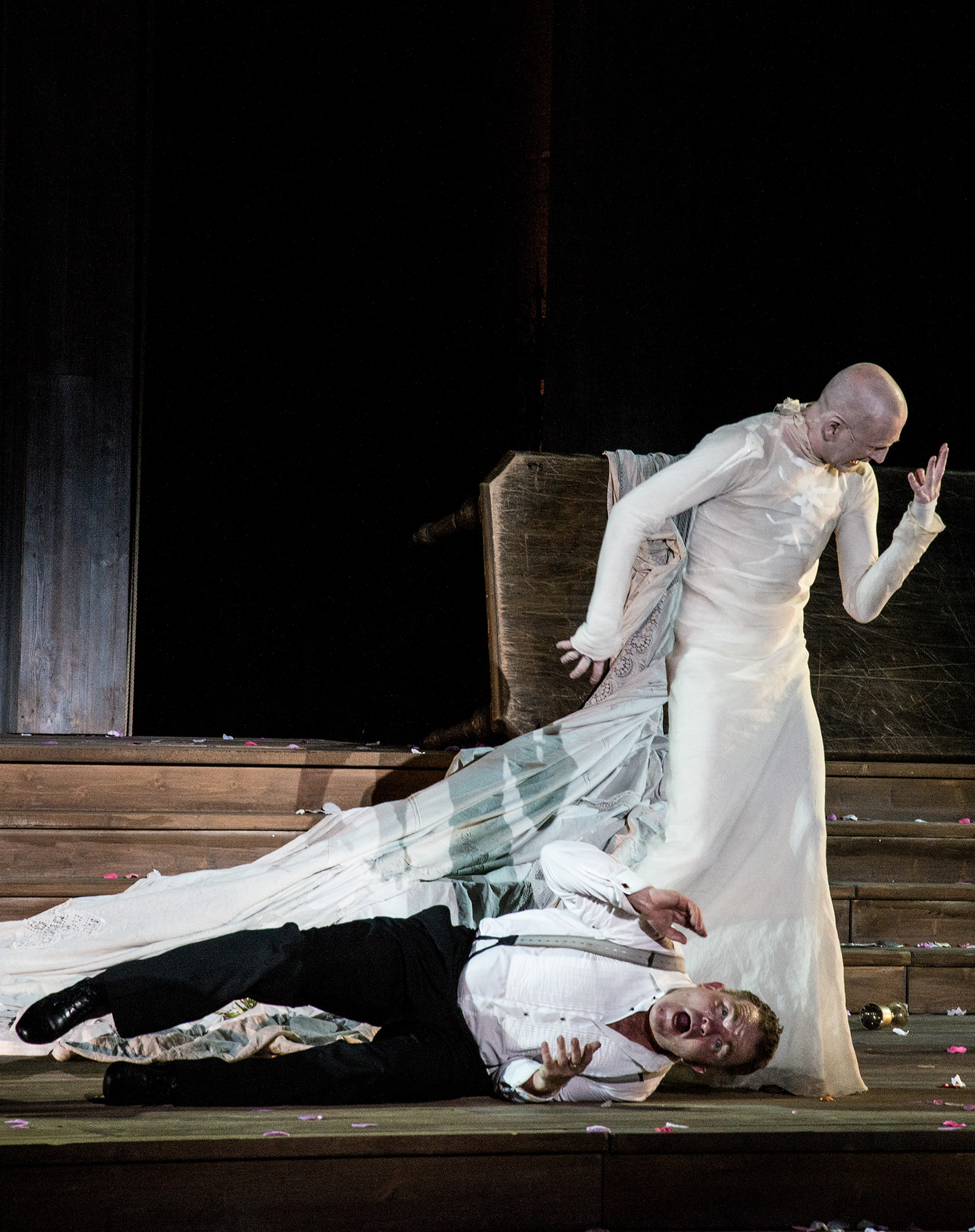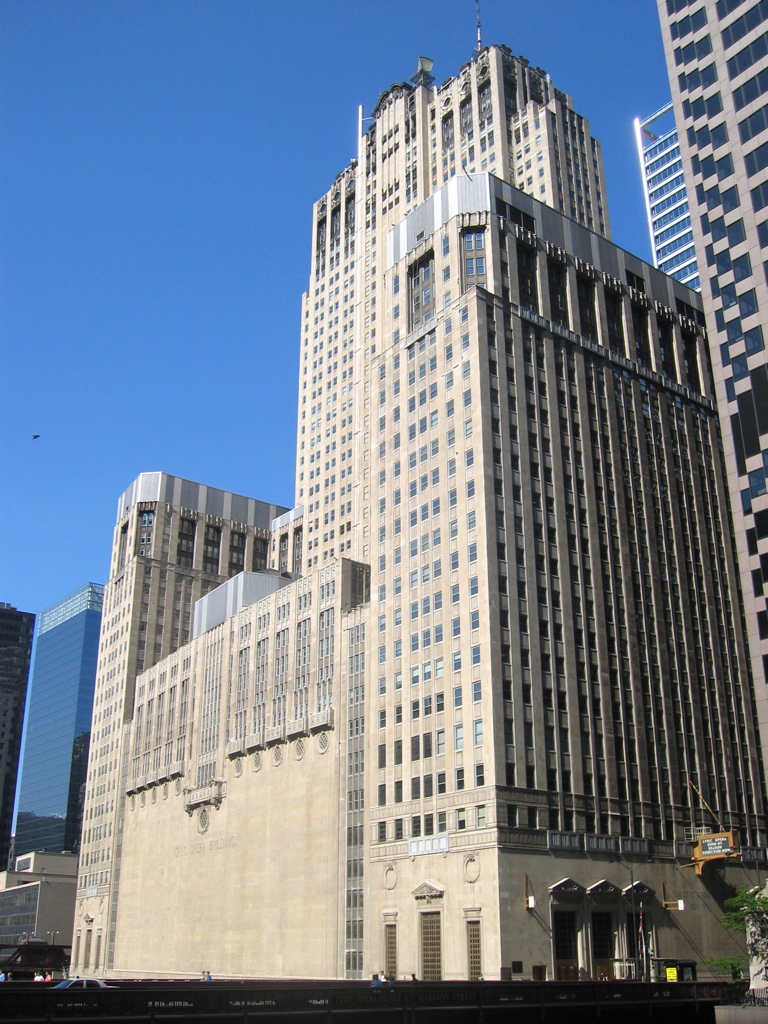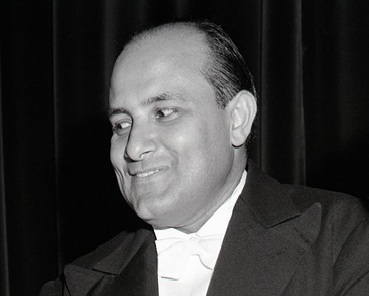|
Giulietta Simionato
Giulietta Simionato (born Giulia Simionato; Forlì, Romagna, 12 May 1910 – Rome, 5 May 2010) was an Italian mezzo-soprano. Her career spanned the period from the 1930s until her retirement in 1966. Life As a girl she studied in a boarding school with nuns who sensed her musical qualities and invited her to study singing, which she did against the opposition of the family, especially her mother. After the latter's death, Giulietta studied first in Rovigo, then in Padua. Her singing debut was in the 1927 musical comedy film, 'Nina, Don't Be Stupid'. The following year she made her operatic debut at Montagnana. In 1933 she won the first "bel canto competition" in Florence against 385 competitors and got an audition at the Teatro alla Scala. The result was positive, but the artistic director Fabbroni found her voice still immature and invited her to return a few years later. Two years later she was put under contract. In 1928, she sang in Verdi's ''Rigoletto''. The first fift ... [...More Info...] [...Related Items...] OR: [Wikipedia] [Google] [Baidu] |
WikiProject Opera
A WikiProject, or Wikiproject, is a Wikimedia movement affinity group for contributors with shared goals. WikiProjects are prevalent within the largest wiki, Wikipedia, and exist to varying degrees within sister projects such as Wiktionary, Wikiquote, Wikidata, and Wikisource. They also exist in different languages, and translation of articles is a form of their collaboration. During the COVID-19 pandemic, CBS News noted the role of Wikipedia's WikiProject Medicine in maintaining the accuracy of articles related to the disease. Another WikiProject that has drawn attention is WikiProject Women Scientists, which was profiled by '' Smithsonian'' for its efforts to improve coverage of women scientists which the profile noted had "helped increase the number of female scientists on Wikipedia from around 1,600 to over 5,000". On Wikipedia Some Wikipedia WikiProjects are substantial enough to engage in cooperative activities with outside organizations relevant to the field at issue. Fo ... [...More Info...] [...Related Items...] OR: [Wikipedia] [Google] [Baidu] |
Cesare Valletti
Cesare Valletti (18 December 1922 - 13 May 2000) was an Italian operatic tenor, one of the leading tenore di grazia of the postwar era. Valletti was born in Rome, where he studied music. He also studied privately with Tito Schipa. He made his debut in Bari, as Alfredo in ''La traviata'', in 1947. He came to prominence in 1950, when he sang in '' Il turco in Italia'', opposite Maria Callas, in Rome. In the same year he made his debut at La Scala in Milan, singing Fenton in ''Falstaff'', a role he reprised when the company took the production to Covent Garden later that year. In 1951, Valletti went to Mexico City to sing ''La traviata'' with Maria Callas. He also partnered her in the famous Visconti production of ''La sonnambula'', conducted by Leonard Bernstein, at La Scala in 1955, and again in ''La traviata'' at Covent Garden in 1958. In September 1953, he made his American debut at the San Francisco Opera in the title role of ''Werther'', opposite Giulietta Simionato ... [...More Info...] [...Related Items...] OR: [Wikipedia] [Google] [Baidu] |
Anna Bolena
''Anna Bolena'' is a tragic opera (''tragedia lirica'') in two acts composed by Gaetano Donizetti. Felice Romani wrote the Italian libretto after Ippolito Pindemonte's ''Enrico VIII ossia Anna Bolena'' and Alessandro Pepoli's ''Anna Bolena'', both recounting the life of Anne Boleyn, the second wife of England's King Henry VIII. It is one of four operas by Donizetti dealing with the Tudor period in English history—in composition order, '' Il castello di Kenilworth'' (1829), ''Anna Bolena'' (1830), ''Maria Stuarda'' (named for Mary, Queen of Scots, it appeared in different forms in 1834 and 1835), and '' Roberto Devereux'' (1837, named for a putative lover of Queen Elizabeth I of England). The leading female characters of the latter three operas are often referred to as "the Three Donizetti Queens." ''Anna Bolena'' premiered on 26 December 1830 at the Teatro Carcano in Milan, to "overwhelming success." Weinstock notes that only after this success did Donizetti's teacher, ... [...More Info...] [...Related Items...] OR: [Wikipedia] [Google] [Baidu] |
Salzburg Festival
The Salzburg Festival (german: Salzburger Festspiele) is a prominent festival of music and drama established in 1920. It is held each summer (for five weeks starting in late July) in the Austrian town of Salzburg, the birthplace of Wolfgang Amadeus Mozart. One highlight is the annual performance of the play '' Jedermann'' (''Everyman'') by Hugo von Hofmannsthal. Since 1967, an annual Salzburg Easter Festival has also been held, organized by a separate organization. History Music festivals had been held in Salzburg at irregular intervals since 1877 held by the International Mozarteum Foundation but were discontinued in 1910. Although a festival was planned for 1914, it was cancelled at the outbreak of World War I. In 1917, Friedrich Gehmacher and Heinrich Damisch formed an organization known as the ''Salzburger Festspielhaus-Gemeinde'' to establish an annual festival of drama and music, emphasizing especially the works of Mozart. At the close of the war in 1918, the festival' ... [...More Info...] [...Related Items...] OR: [Wikipedia] [Google] [Baidu] |
Vienna State Opera
The Vienna State Opera (, ) is an opera house and opera company based in Vienna, Austria. The 1,709-seat Renaissance Revival venue was the first major building on the Vienna Ring Road. It was built from 1861 to 1869 following plans by August Sicard von Sicardsburg and Eduard van der Nüll, and designs by Josef Hlávka. The opera house was inaugurated as the "Vienna Court Opera" (''Wiener Hofoper'') in the presence of Emperor Franz Joseph I and Empress Elisabeth of Austria. It became known by its current name after the establishment of the First Austrian Republic in 1921. The Vienna State Opera is the successor of the old Vienna Court Opera (built in 1636 inside the Hofburg). The new site was chosen and the construction paid by Emperor Franz Joseph in 1861. The members of the Vienna Philharmonic are recruited from the Vienna State Opera's orchestra. The building is also the home of the Vienna State Ballet, and it hosts the annual Vienna Opera Ball during the carnival ... [...More Info...] [...Related Items...] OR: [Wikipedia] [Google] [Baidu] |
Lyric Opera Of Chicago
Lyric Opera of Chicago is one of the leading opera companies in the United States. It was founded in Chicago in 1954, under the name 'Lyric Theatre of Chicago' by Carol Fox, Nicola Rescigno and Lawrence Kelly, with a season that included Maria Callas's American debut in ''Norma''. The company was re-organized by Fox in 1956 under its present name and, after her 1981 departure, it has continued to be of one of the major opera companies in the United States. The Lyric is housed in a theater and related spaces in the Civic Opera Building. These spaces are now owned by the Lyric. Opera in Chicago 1850–1954 The first opera to be performed in Chicago was Bellini's ''La sonnambula'', presented by a traveling opera company on 29 July 1850. Chicago's first opera house opened in 1865 but was destroyed in the Great Fire of Chicago in 1871. The second opera house, the Chicago Auditorium, opened in 1889. In 1929 the current Civic Opera House on 20 North Wacker Drive was opened, thoug ... [...More Info...] [...Related Items...] OR: [Wikipedia] [Google] [Baidu] |
Teatro Nacional De São Carlos
The ''Teatro Nacional de São Carlos'' () (''National Theatre of Saint Charles'') is an opera house in Lisbon, Portugal. It was opened on June 30, 1793 by Queen Maria I as a replacement for the Tejo Opera House, which was destroyed in the 1755 Lisbon earthquake. The theatre is located in the historical center of Lisbon, in the Chiado district. History In 1792, a group of Lisbon businessmen decided to finance the construction of a new Opera House in the city. The theatre was built in only six months following a design by Portuguese architect José da Costa e Silva, with neoclassical and rococo elements. The general project is clearly inspired by great Italian theatres like the San Carlo of Naples (interior) and La Scala in Milan (interior and façade). In the early 19th century, when the Portuguese Royal Court had to flee to the Portuguese colony of Brazil to escape the invading Napoleonic troops, a theatre modelled on the São Carlos was built in Rio de Janeiro. The t ... [...More Info...] [...Related Items...] OR: [Wikipedia] [Google] [Baidu] |
Edinburgh Festival
__NOTOC__ This is a list of arts and cultural festivals regularly taking place in Edinburgh, Scotland. The city has become known for its festivals since the establishment in 1947 of the Edinburgh International Festival and the Edinburgh Festival Fringe which runs alongside it. The latter is the largest event of its kind in the world. The term ''Edinburgh Festival'' is commonly used, but there is no single festival; the various festivals are put on by separate, unrelated organisations. However they are widely regarded as part of the same event, particularly the various festivals that take place simultaneously in August each year. The term ''Edinburgh Festival'' is often used to refer more specifically to the Fringe, being the largest of the festivals; or sometimes to the International Festival, being the original "official" arts festival. Within the industry, people refer to all the festivals collectively as the ''Edinburgh Festivals'' (plural). The festivals Listed in ... [...More Info...] [...Related Items...] OR: [Wikipedia] [Google] [Baidu] |
The New York Times
''The New York Times'' (''the Times'', ''NYT'', or the Gray Lady) is a daily newspaper based in New York City with a worldwide readership reported in 2020 to comprise a declining 840,000 paid print subscribers, and a growing 6 million paid digital subscribers. It also is a producer of popular podcasts such as '' The Daily''. Founded in 1851 by Henry Jarvis Raymond and George Jones, it was initially published by Raymond, Jones & Company. The ''Times'' has won 132 Pulitzer Prizes, the most of any newspaper, and has long been regarded as a national "newspaper of record". For print it is ranked 18th in the world by circulation and 3rd in the U.S. The paper is owned by the New York Times Company, which is publicly traded. It has been governed by the Sulzberger family since 1896, through a dual-class share structure after its shares became publicly traded. A. G. Sulzberger, the paper's publisher and the company's chairman, is the fifth generation of the family to head the p ... [...More Info...] [...Related Items...] OR: [Wikipedia] [Google] [Baidu] |
Leonard Warren
Leonard Warren (April 21, 1911 – March 4, 1960) was an American opera singer. A baritone, he was a leading artist for many years with the Metropolitan Opera in New York City. Especially noted for his portrayals of the leading baritone roles in the operas of Giuseppe Verdi, he had few rival baritones in his time. His power and range were the highlights of his vocal instrument. Biography Born Leonard Warenoff in the Bronx to Russian Jewish immigrant parents, Warren was first employed in his father's fur business. In 1935, he joined the chorus at Radio City Music Hall. In 1938, he entered the Metropolitan Opera Auditions of the Air. The Met sent him to Italy that summer with a stipend to study. Returning to the United States, Warren made his concert debut at the Metropolitan Opera in excerpts from ''La traviata'' and ''Pagliacci'' during a concert in New York City in November 1938. His operatic debut took place there in January 1939, when he sang Paolo in ''Simon Boccanegra''. A ... [...More Info...] [...Related Items...] OR: [Wikipedia] [Google] [Baidu] |
Antonietta Stella
Maria Antonietta Stella (15 March 1929 – 23 February 2022) was an Italian operatic soprano, and one of the most prominent Italian spinto sopranos of the 1950s and 1960s. She made her debut in Spoleto in 1950, as Leonora in Verdi's ''Il trovatore'', a year later at Rome Opera, as Leonora in ''La forza del destino'', in 1954 at La Scala in Milan, as Desdemona in ''Otello'', in 1955 at the Royal Opera House in London as Aida, and in 1956 at the Metropolitan Opera in New York City, in the same role. Life and career Born in Perugia, Stella studied at the in her home town and at the Accademia Nazionale di Santa Cecilia in Rome, and made her debut in Spoleto, as Leonora in Verdi's ''Il trovatore'', in 1950. The tenor Giuseppe Treppaciani was her partner on stage, and later became her husband. She appeared at the Rome Opera in 1951, as Leonora in Verdi's ''La forza del destino'' alongside Mario del Monaco. The same year, she appeared in Germany at the Staatstheater Stuttgart, the ... [...More Info...] [...Related Items...] OR: [Wikipedia] [Google] [Baidu] |
Carlo Bergonzi (tenor)
Carlo Bergonzi (13 July 1924 – 25 July 2014) was an Italian operatic tenor. Although he performed and recorded some bel canto and verismo roles, he was above all associated with the operas of Giuseppe Verdi, including many of the composer's lesser known works he helped revive. He sang more than forty other roles throughout his career. Biography Early life Bergonzi was born in Polesine Parmense, near Parma in Northern Italy, on 13 July 1924. He was an only child."Carlo-Bergonzi-obituary" ''The Telegraph'' (London), 27 July 2014 on telegraph.co.uk He later claimed he saw his first opera, Verdi’s '''', when he was six years old. He sang in church, and s ... [...More Info...] [...Related Items...] OR: [Wikipedia] [Google] [Baidu] |





.png)
